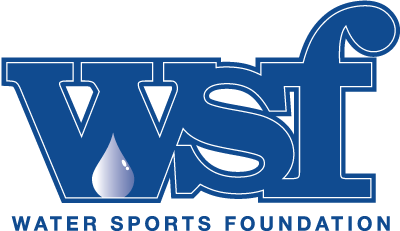National Public Relations Outreach Campaign
The Water Sports Foundation’s National Public Relations Outreach Campaign produced the largest online repository of boating safety content, using materials provided by the United States Coast Guard, the Water Sports Foundation, and other boating safety nonprofits, organizations and stakeholders. The purpose of the National Boating Safety Media Center was to create a comprehensive, one-stop resource featuring relevant boating safety content and statistical data, still and video images, and expert contacts available for media interviews.
The campaign created a curated database of national and regional media that cover boating and boating safety, including television, magazines, newspapers, radio, podcasts and social media. This database was developed and used during the project’s funding period in 2020 – 2021, resulting in 641 news stories and more than 1 billion potential media impressions. The database and media center continue to be a valuable resource for journalists and recreational boating safety advocates.

NSBC BoatBeat Blog: Carbon Monoxide
Exposure to carbon monoxide (CO) in large amounts or even small amounts for a long duration often results in death. CO is an odorless, colorless and tasteless gas in the exhaust produced in gasoline engines.
Read More
NSBC BoatBeat Blog: Search and Rescue Process
If a boater is in distress, they should contact search and rescue assets via VHF-DSC marine band radio, or with an EPIRB or PLB. It is the boater’s responsibility to contact search and rescue assets.
Read MoreNSBC BoatBeat Blog: EPIRB and PLB
An Emergency Position Indicating Radio Beacon, or EPIRB, is used to alert Search and Rescue forces in the event of an emergency.
Read More
NSBC BoatBeat Blog: Emergency Engine/Propulsion Cut-Off Devices FAQ
Emergency engine/propulsion cut-off devices, sometimes referred to as an engine cut-off switch or kill switch, are a time-proven safety device used to stop the boats engines should the driver unexpectedly fall overboard.
Read More
NSBC BoatBeat Blog: VHF Radio with Digital Selective Calling (DSC)
The VHF radio with DSC is the most common emergency marine communications device, and with good reason: It’s simple to operate, communications go both ways, and when a boater hits the panic button, the U.S. Coast Guard will automatically know who the boater is.
Read More
NSBC BoatBeat Blog: Boating Emergency Preparedness
A boating emergency can happen anytime, anywhere — and does not only refer to a problem with the vessel, but also to any dangerous situation involving a passenger.
Read More
NSBC BoatBeat Blog: Boating Preparedness Recommendations
At a minimum, a boater should make sure that safety and other related equipment are on their vessel and in good working condition before each outing.
Read More
U.S. Coast Guard Boating Safety Division
The U.S. Coast Guard Boating Safety Division (CG-BSX-2) is dedicated to reducing loss of life, injuries and property damage that occurs on U.S. Waterways by improving the knowledge, skill and abilities of recreational boaters.
Read More
Jim Emmons
Jim Emmons is executive director of the non-profit Water Sports Foundation (WSF) and is a long-term recreational boating safety activist and enthusiast. He is serving in his second term on the United States Coast Guard’s National Boating Safety Advisory Council and currently serves as chairman. He also serves on NASBLA’s Paddlesports Committee and the national Sober Skipper Advisory Council.
Read More
Brian Goodwin
As the Technical Director at the American Boat and Yacht Council (ABYC), Mr. Goodwin is responsible for the managing the review and publication of over 70 standards. He also ensures the execution of numerous grants awarded to the ABYC Technical Department.
Read More
Jack Ellis
Jack Ellis is Managing Director of Info-Link, a Miami, FL-based firm he founded in 1995 to provide market intelligence to clients in the recreational boating industry.
Read More
Cindy McCaffery
As the Vice President of Program Development for Sea Tow Services International, Cindy’s responsibilities include coordination of Sea Tow’s training programs, boat shows and events. She and her team manage multiple Sea Tow programs for dealers, manufacturers, retailers and service providers.
Read More
Captain Joseph Frohnhoefer III
Captain Joe Frohnhoefer III virtually grew up on a boat. His experience ranges from being one of the first Sea Tow deckhands, to Sea Tow Captain after earning his first captain’s license at the age of 18, to currently holding a 1600 Ton Master, Chief Mate – All Oceans, All Seas license.
Read More
Kristin Frohnhoefer
Kristen Frohnhoefer is president of Sea Tow International and is responsible for overseeing all internal operations, including the company’s membership and sales programs, marketing, communications, the Customer Care Center and technology efforts.
Read More
Gail R. Kulp
Gail R. Kulp is the Executive Director of national, non-profit organization, Sea Tow Foundation, headquartered in Southold, NY. With over 16 years of non-profit experience, 13 of which are within the boating industry, Gail is well-versed in all things boating safety.
Read More
Chris Edmonston
Chris Edmonston is a lifelong boater who brings more than 30 years of experience in the marine industry, with 20+ years specializing in boating safety issues and concerns. Besides his role of president of the BoatU.S. Foundation, he also serves as vice president of government affairs for BoatU.S.
Read More
Robin Pope, Ph.D., PA-C, FAWM
Robin Pope has more than three decades experience in boating education. He is an instructor, trainer and educator for the American Canoe Association in whitewater, kayaking and swiftwater rescue. He’s served in numerous ACA leadership roles, including chair of its Safety Education and Instruction Council and, currently, chair of ACA’s Board.
Read More
